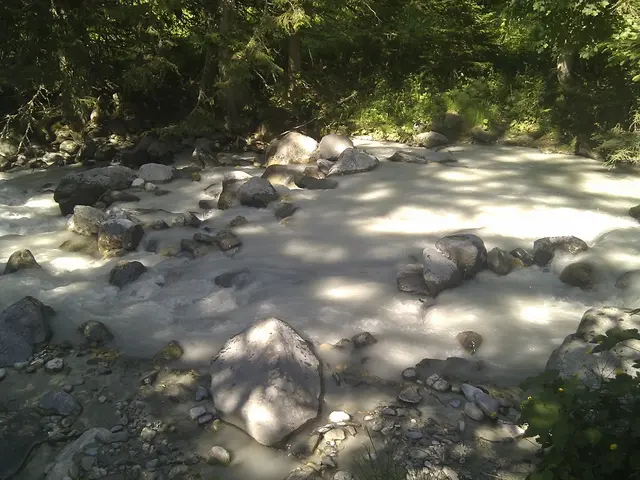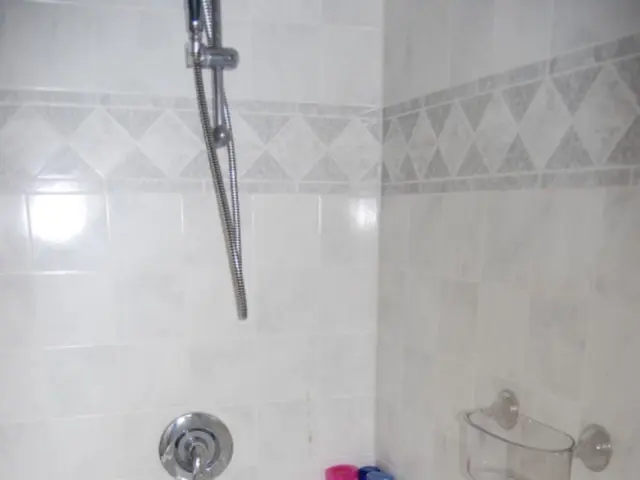Preparing Your 3-Season Tent for Winter: Essential Tips and Tricks
Heck yeah, it's possible to use a three-season tent in the winter, but let me tell ya, there's a catch. Not all tents are created equal, and if your current tent is built like a wimpy little snowflake, you'll need to make some adjustments to make it winter-ready. Here's a low-down on winterizing your tent to make it work in those frosty conditions:
Tent Poles
First things first, check if your three-season tent has the right type of poles. Poles made of aluminum or carbon fiber are your friends here, whereas fiberglass will shatter and splinter like a piece of glass in that cold weather. You don't want to battle the cold winds with a broken tent, do ya?
If your tent doesn't have the boss poles, you can still go for it in lighter winter conditions, like when there's no snowfall or temperatures hovering around or above freezing. But in intense cold or snow-heavy situations, heed my advice and upgrade to a more robust, four-season tent.
Tent Stakes
When camping in snow, traditional tent stakes will sink quicker than a stone in the ocean. To remedy this, consider getting tent stakes designed for sand. These bad boys will hold your tent in place like a champ in snowy conditions. You can use them like regular stakes, or try the deadman technique, where you bury the stake in the snow, secure the guyline, and you're all set. Plastic grocery bags also work great for the deadman method, because you just fill them with snow, secure your guyline, and bury them like a boss.
Insulate Your Tent
Insulating your tent properly is crucial for keeping you snug as a bug in a rug. Here's how you can make it happen:
- Choose the Perfect Site: Find a spot sheltered from the wind to set up your tent.
- Build a Windbreak: If needed, create a windbreak to shield your tent from the cold breeze.
- Prepare the Ground: Flatten the ground beneath your tent to prevent excess heat from escaping.
- Cover the Tent: Use a thermal blanket or snowshredder fly to cover the tent.
- Insulate the Inside Ground: Place an insulating layer, like a foam pad or air mattress, on the ground inside the tent.
- Fill it with Warm Gear: Bring along a warm sleeping bag, sleeping pad, and extra layers of clothing.
- Stay Warm: Use a candle or a battery-operated heater to generate heat in the tent.
Don't forget to also pack snow around the raised rain fly to create a barrier against the cold wind. This will make a huge difference in keeping you cozy in your icy abode.
Bring the Right Gear
Besides all that insulation business, you'll also need the right winter gear:
- A low-temp-rated sleeping bag
- A sleeping bag liner
- A high R-value sleeping pad or cot
- Cold-weather outerwear like coats, gloves, hats, and wool socks
- Snow pants and gaiters
And, last but not least, don't forget a shovel – you'll need it to dig your site, create snow structures, and insulate your tent.
A Final Note
If you're doing some weekend winter camping with your three-season tent and the right gear, you can make it work like a charm. But if you're a die-hard winter camper and venture into extreme cold, heavy snowfall, high winds, or above tree line, it's high time you upgrade to a four-season monster.
Frequently Asked Questions
Can a three-season tent be used in winter?
Yes, but you'll want to winterize it properly and ensure it has the right features, like aluminum or carbon fiber poles and a small size, to withstand winter conditions.
Is a four-season tent necessary for winter camping?
If you engage in regular winter camping in extreme conditions, particularly low temperatures, heavy snowfall, and harsh winds, a four-season tent is highly recommended. But if you do the occasional winter camp and don't want to shell out for extra gear, you can still use a well-winterized three-season tent.
- To ensure your tent can withstand winter conditions, consider upgrading to a four-season tent if your current three-season model has fiberglass poles, as aluminum or carbon fiber poles are more suitable for cold weather.
- When camping in snow, opt for tent stakes designed for sand, or use the deadman technique with plastic grocery bags filled with snow, to secure your tent effectively.
- Insulating your tent is crucial for maintaining warmth; follow these steps: choose a wind-sheltered site, create a windbreak, flatten the ground, cover the tent, insulate the ground inside, fill it with warm gear, and use heat sources like candles or battery-operated heaters.
- Pack the right winter gear such as a low-temp-rated sleeping bag, a liner, high R-value sleeping pad, cold-weather outerwear, snow pants, gaiters, and a shovel.
- A three-season tent can be used for weekend winter camping with the right gear, but avid winter campers in extreme conditions should upgrade to a four-season tent for better protection.







